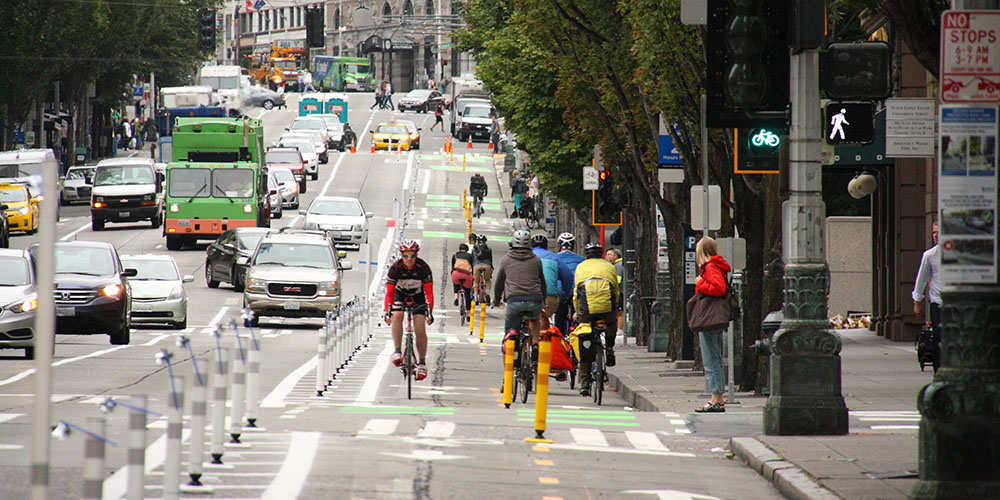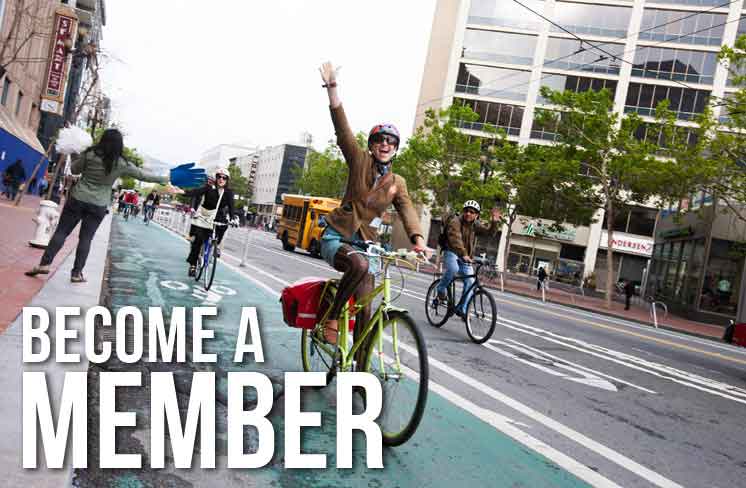Photo by SDOT / Flickr
In the past year, we’ve seen all sorts of new bicycle infrastructure crop up on San Francisco streets. Parking-protected bike lanes and transit boarding islands are innovative solutions making our streets better for all users. One other new type of bike infrastructure we may see soon is the two-way protected bike lane.
Two-way protected bike lanes are already transforming streets in cities across the country. Chicago, New York, Seattle and many other U.S. cities all offer examples of this type of infrastructure on different types of streets.
The first two-way protected bike lane in San Francisco completed construction in 2012 on Cargo Way, a key Blue Greenway connection along the southern waterfront that borders a mostly industrial area.
Cargo Way will not be alone for long, as City staff are considering two-way protected bike lanes for streets including Townsend, the Embarcadero, and both Folsom and Howard. All of these streets being large thoroughfares, this next wave of two-way bike facilities will take on the design challenges associated with busy streets.

Photo by Paul Kreuger / Flickr
Two-way protected bike lanes come with a unique set of advantages which make them perfect for some streets:
- Smart use of limited street space: A two-way protected bike lane is more space efficient than two single-direction bike lanes. Because both directions of bike travel can be protected by one barrier, a good amount of roadway — along with costs — can be saved for other uses.
- Increasing access: A two-way bike lane provides unrivaled access for people riding to businesses, local attractions and beautiful views. Two-way bike lanes are great to run adjacent to parks or waterfronts.
- Creating connectivity: A two-way facility on a one-way street allows people riding to connect in ways that cars can not. In this way, these bike lanes can be a great way to open up the bike network in congested areas and connect to intersecting bike routes.
- Dealing with driveways: Two-way bike lanes work well when there are fewer vehicles crossings. If one side of a street has a much higher concentrations of driveways and loading needs, a two-way bike lane can keep people riding clear of those conflict zones by keeping them on the other side of the street.
These lanes do come with some design challenges too. Most notably, they complicate turning movements for people riding. Other cities address this with street markings and well-designed signaling.
We are very excited to see our city’s toolkit for protected bike lanes expand to include two-way treatments. We are also hoping to hear what you, our members, think about this design option. Join us next week on June 1 to look at how these designs might play out on Folsom and Howard streets and provide your feedback.
SoMa Member Committee: Design Review
Thursday, June 1 from 6:00 – 7:30 pm
Public Architecture, 1211 Folsom St.


